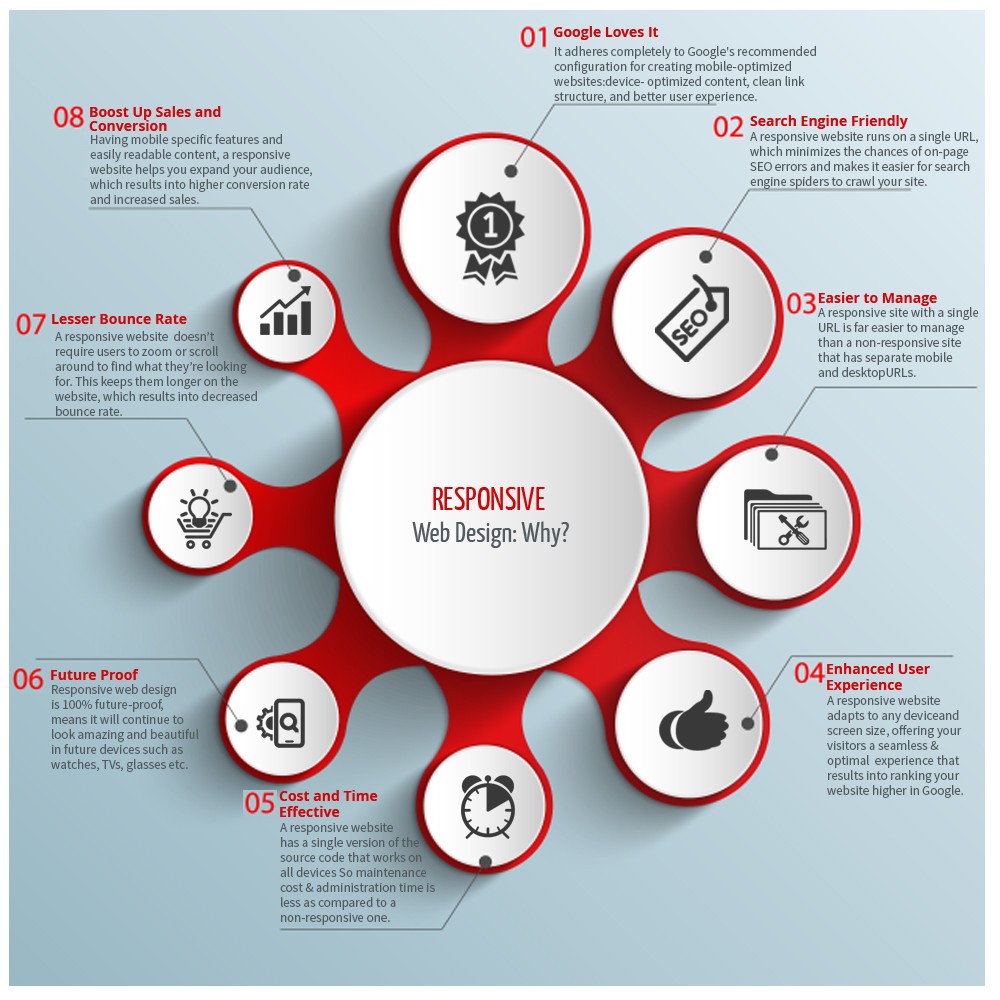The Advancement Of Website Design: Then And Now
The Advancement Of Website Design: Then And Now
Blog Article
Material Writer-Johnsen Clarke
In the past, internet sites were straightforward and concentrated on info. Navigation was direct, and design was for desktop computers. Now, customer experience is key. Information overviews styles for simple navigating. Receptive formats match various tools. Today, dark setting lowers pressure, and minimalist menus improve navigation. Interactive functions involve individuals, and bold visuals stand out. AI assimilation improves engagement. See how click the up coming article has evolved to improve your on-line journey.
Early Days of Website Design
In the early days of web design, simplicity reigned supreme. Websites were basic, with restricted shades, fonts, and formats. The emphasis got on giving info as opposed to showy visuals. Users accessed the internet through slow dial-up connections, so speed and capability were key.
Navigating https://www.forbes.com/sites/forbesbusinesscouncil/2022/03/02/how-to-make-multichannel-marketing-your-strategy-for-2022/ were straightforward, usually located at the top or side of the web page. Sites were designed for desktop computers, as mobile surfing had not been yet widespread. Material was king, and designers prioritized very easy readability over complicated layout elements.
HTML was the main coding language utilized, and designers had to function within its constraints. Animations and interactive features were very little contrasted to today's standards. Websites were fixed, with little dynamic web content or customized individual experiences.
Surge of User-Focused Layout
With the advancement of website layout, a change towards user-focused design principles has actually ended up being progressively prominent. Today, creating web sites that focus on user experience is crucial for involving site visitors and attaining organization objectives. User-focused design involves recognizing the demands, choices, and behaviors of your target market to customize the site's format, web content, and features appropriately.
Developers currently carry out thorough research, such as customer studies and usability screening, to collect insights and feedback straight from users. This data-driven strategy helps in developing instinctive navigation, clear calls-to-action, and aesthetically attractive interfaces that resonate with visitors. By positioning the user at the facility of the design procedure, internet sites can deliver a more tailored and pleasurable experience.
Receptive design has actually additionally become an essential element of user-focused layout, making certain that internet sites are maximized for various tools and screen sizes. This versatility enhances accessibility and use, dealing with the varied ways users connect with internet sites today. Fundamentally, the surge of user-focused design signifies a change in the direction of developing electronic experiences that prioritize the needs and expectations of the end customer.
Modern Trends in Website Design
Check out the current trends shaping web design today. One popular trend is dark setting layout, using a smooth and modern appearance while lowering eye pressure in low-light settings. One more essential pattern is minimalist navigation, simplifying menus and boosting individual experience by focusing on essential elements. Integrating micro-interactions, such as animated buttons or scrolling effects, can produce a much more appealing and interactive website. Receptive layout remains essential, ensuring seamless individual experiences across different tools. Furthermore, making use of strong typography and unbalanced designs can include aesthetic rate of interest and accentuate certain web content.
Integrating AI modern technology, like chatbots for client support or tailored recommendations, improves user engagement and enhances processes. Access has additionally become a significant trend, with designers prioritizing inclusive style methods to accommodate varied user needs. Welcoming sustainability by enhancing website performance for speed and effectiveness is one more arising fad in web design. Collaborating with user responses and information analytics to iterate and improve style constantly is crucial for staying relevant in the ever-evolving digital landscape. By welcoming these contemporary fads, you can produce an aesthetically attractive, user-friendly internet site that resonates with your audience.
Final thought
As you reflect on the development of web site layout from the early days to now, you can see exactly how user-focused layout has come to be the driving pressure behind modern patterns.
Embrace the trip of modification and adaptation in website design, constantly keeping the customer experience at the center.
Tippingpointdigital
Stay current with the latest patterns and technologies, and never stop developing your strategy to create aesthetically magnificent and straightforward websites.
Progress, adapt, and produce - the future of web design is in your hands.
